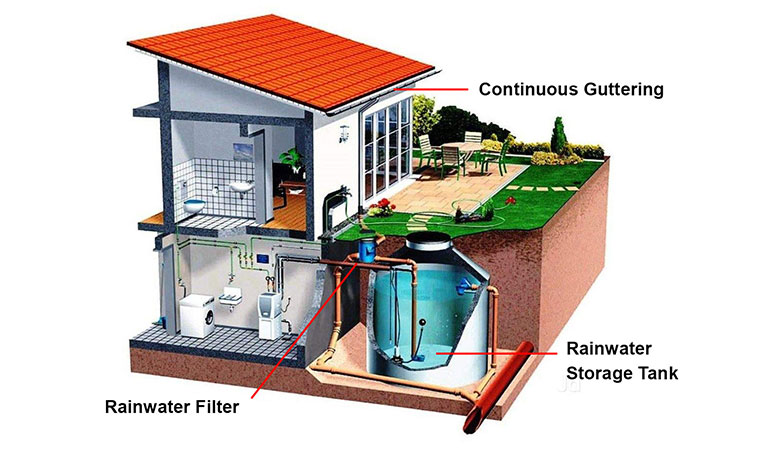Rainwater Harvesting (RWH)
Rainwater harvesting (RWH) is a simple method by which rainfall is collected for future usage. The collected rainwater may be stored, utilized in different ways or directly used for recharge purposes. With depleting groundwater levels and fluctuating climate conditions, RWH can go a long way to help mitigate these effects. Capturing the rainwater can help recharge local aquifers, reduce urban flooding and most importantly ensure water availability in water-scarce zones. Though the term seems to have picked up greater visibility in the last few years, it was, and is even today, a traditional practice followed in rural India. Some ancient rainwater harvesting methods followed in India include madakas, ahar pynes, surangas, tanks and many more.
This water conservation method can be easily practiced in individual homes, apartments, parks, offices and temples too, across the world. Farmers have recharged their dry bore wells, created water banks in drought areas, greened their farms, increased sustainability of their water resources and even created a river. Technical know how for the rooftop RWH with direct storage can be availed for better implementation. RWH An effective method in water scarce times, it is also an easily doable practice. Practical advice is available in books written by Indukanth Ragade & Shree Padre, talks by Anupam Mishra and other easy to follow fun ways.
Why is rainwater harvesting important in today's world?
The importance of rainwater harvesting lies in the fact that it can be stored for future use.
Just as it can be used directly so also the stored water can be utilized to revitalize the
ground level water and improve its quality. ...
Harvesting rainwater checks surface run off of water and reduces soil erosion.

How is rain water harvesting helpful?
The rainwater that falls on your roof and property is essentially free.
All it takes is a method to harvest it into a tank or cistern for later use. ...
Rainwater harvesting helps utilities reduce peak demands during summer months, saving treated water for more important and appropriate water uses.
THE WATER CONSERVATION BENEFITS OF RAINWATER HARVESTING
- The rainwater that falls on your roof and property is essentially free.
- All it takes is a method to harvest it into a tank or cistern for later use.
- Rainwater harvesting can be a great educational tool to get people to recognize their individual or household water usage. This can get them to start conserving water in other areas around their home.
- For communities that rely on imported water to supply their needs, collecting rainwater that falls naturally in the community can reduce the need for imported water.
- Rainwater harvesting helps utilities reduce peak demands during summer months, saving treated water for more important and appropriate water uses.
- While rainwater can be a perfect primary water source for many uses and situations, it is also a great backup water supply for emergency situations.





